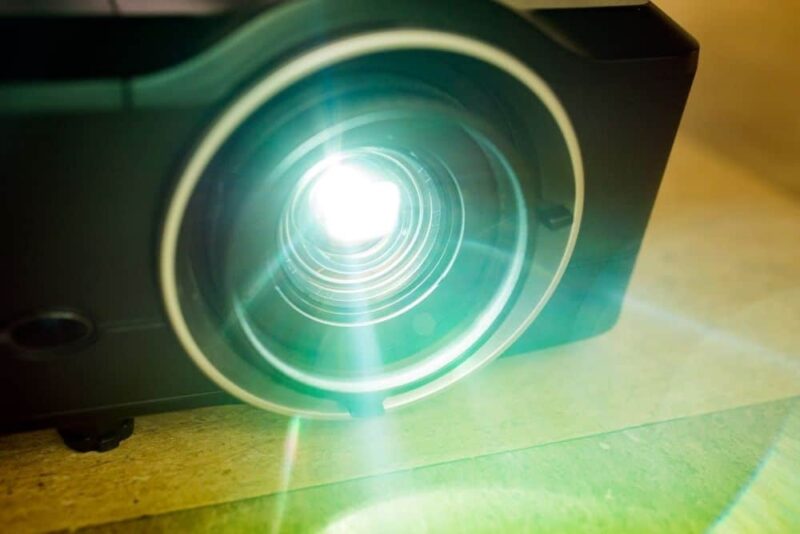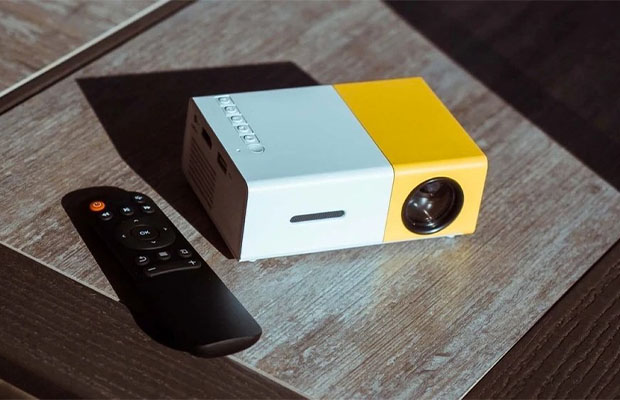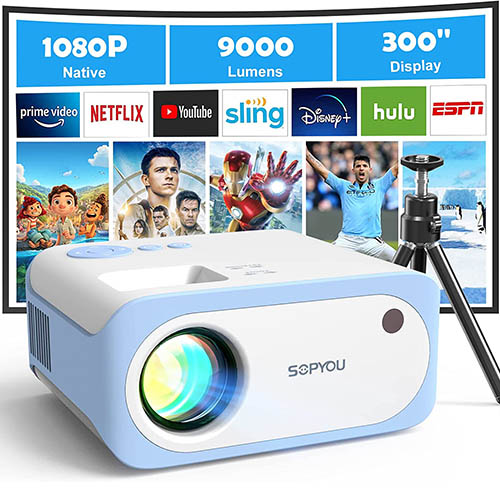A lamp or bulb gives life to every projector. Similar to any other light source, this bulb will eventually run out. So, how do you know how long your projector bulbs will last? The average life of a bulb or projection bulb is about 2000 hours. Knowing your projector’s bulb life allows you to plan ahead and purchase spare bulbs in time. If you’re wondering about your bulb life, you’ve come to the right place.
Table of Contents
The Bulb Life Of A Projector
Projector bulbs typically had an average lifespan of between 2,000 and 4,000 hours, and they heated up quickly.
But now, thanks to advances in projector technology, many new models are now equipped with an Eco Mode feature that helps extend the life of the projection bulb.
bulb life is measured in hours, ranging from 1000 hours to 55000 hours, depending on what type of bulb the projector is using?
For example, home theater projectors are typically used more frequently than commercial or classroom projectors, so their bulbs tend to have shorter lifespans.
Also, projector bulbs often dim over time, so it’s important to replace the bulb before its end of life to ensure the best possible performance.
So, it depends a lot on what type of projector you use, and what type of projector you use to replace the bulb.
Sometimes it can even last more than 60000 hours if we use high-capacity premium bulbs or 4k projectors.
The Factors that Affect The Bulb Life Of A Projector
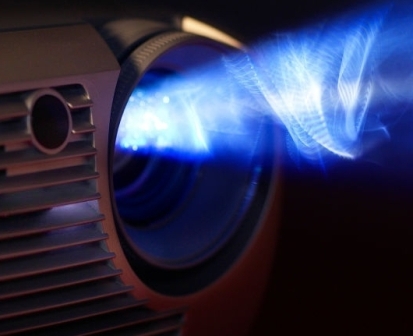
Knowing what factors can extend or shorten a projector’s lifespan is critical. While you can’t stop its light output from being reduced, there are several factors that can help you get the most out of your projection device.
Knowing what factors affect the lifespan of your projection equipment can also determine the total cost of ownership.
- 1. The type of lighting technology used.
There are two common types of bulbs for projectors. The first is an LED and the second is a metal halide. Currently, most portable projectors use metal halide bulb technology, which, as mentioned earlier, lasts about 2000 to 5000 hours.
On the other hand, LED lights are still not a typical light source for portable projectors. But in terms of life expectancy, they have a lifespan of up to 20,000 hours.
- 2. Use and storage
Whenever the projector is transported, it should be packed in a padded carrying bag. Avoid placing it where it may be exposed to high temperatures such as sunlight.
Removing the bulb during shipping may extend the projector’s bulb life. However, bulbs must be carefully transported with backing material.
When in use, avoid placing it near the edge of the table. Also, make sure that the wires cannot be tripped over, which could cause the device to fall.
After using the device, give it some time to cool before placing it completely inside the case. If your projector is permanently mounted on the ceiling or wall, it is safe from potential damage.
- 3. bulb life
Manufacturers add different features to the use of projectors. For example, some devices have a so-called “economy mode” that enables this feature to reduce the brightness of the projected image.
This will relatively prolong the life of the bulb. But it’s worth noting that no matter how carefully you treat projector lights, they will dim after a while.
- 4. Proper ventilation and maintenance
Projector bulbs get very hot when in use. Therefore, the projector must have proper ventilation. It’s wise to clean them regularly so that specks of dust don’t clog them.
Signs that You Need to Replace Your Projector Bulb
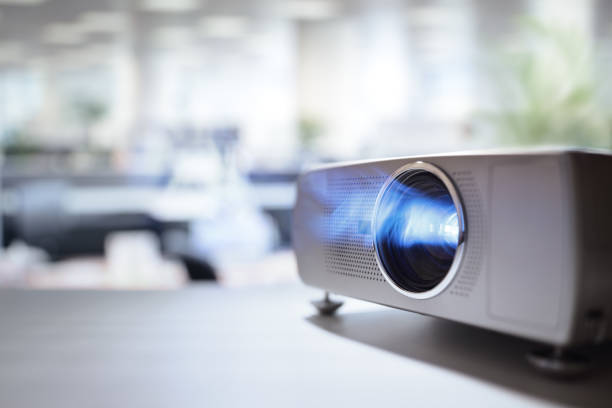
As mentioned above, projection bulbs can dim and wear out over time. Once this happens, you need to replace the bulb with a new one. However, no one wants to find out that a projector has lost bulb life during a video presentation.
To prevent this from happening, here are the signs that you need to replace your projector bulb:
The indicator light indicates that the bulb life has decreased.
Most video projectors on the market have indicator life. This will let you know how much the life of the bulb has been reduced.
While a shorter bulb life doesn’t mean you need to replace it right away, it’s a good idea to keep a spare bulb with you. This way, you can easily replace the bulb when needed.
- Flickering of the projected image.
Some of the most common signs that your projector bulb needs to be replaced soon can be damaged by shock, heat, or simply burnout.
Get yourself a new desk lamp as soon as possible in case it burns out while giving a speech or watching a movie at home.
- The device makes an unusual sound.
The popping sound you hear when you turn on the projector means the bulb has burned out. After this sound, the screen will be completely dimmed.
Similarly, it could also indicate a premature failure of a component of the projection equipment. This is because projector bulbs, as well as some components of the device, use high-voltage technology that can cause failure over time.
- Changes in color.
When the projector is new, it produces clear and sharp colors. However, if you turn on the device and notice that its color changes, it means that the light is no longer bright enough to emit the correct color on its LCD panel or color wheel.
Another indicator is when your projector produces a dull or dull image. This means the bulb is about to go out and must be replaced.
A great way to test the brightness and color produced by a projector is to use it in a very dark room. Set the device to maximum brightness.
If the image is still dim, the bulb will burn out soon.
Tips to Improve Bulb Life
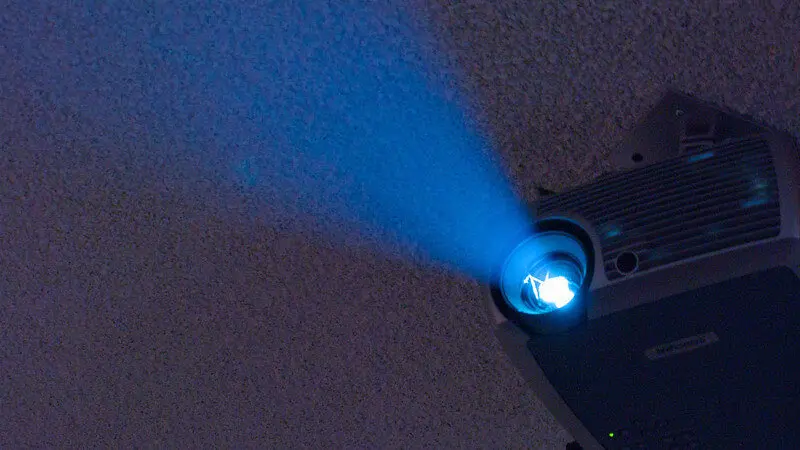
To prolong bulb life, it is recommended to always cover the lens with a cap to prevent it from getting dirty.
If the bulb is not covered, dust and other elements (such as pet hair, insects, and fungi) can collect around the bulb, settle on the bulb, and quickly cause the bulb to overheat.
So not only will this shorten the life of the bulb, but it will also increase the cost of replacing the bulb before it reaches its end of life.
Also, when you use the projector more often, there will definitely be overheating because the projector is already used in movie theaters.
If your projector bulb doesn’t allow you to rest, it will burn out before its guaranteed lifespan.
Now, if you are also looking for some tips on how to extend the life of your projection bulb, you can extend the life of your projection bulb by following the given below principles.
- Don’t run it around the clock.
- Don’t let it get hot.
- give it time to cool down
- Place the projector in a dust-free environment
- Put it on the cooler side of the room, preferably near the air conditioner
- If the projector has an energy-saving mode, use it.
- If possible, use it when the sun goes down.
- Clean or dust frequently.
- Avoid sunlight if you have sunlight in your room.
Please do not use without UPS or inverter power supply, as a sudden burst of power may blow the bulb.
Be sure to read the owner’s manual to find out how to keep your projector bulb a good lifespan.
These are some routine workouts that, if followed, will give you relatively more life.
Final Words
Projectors are a great way to bring your presentations, movies, and games from your PC screen to the big screen. But how long do projector bulbs last?
The type of bulb will determine its lifespan and also where you will use it.
If you plan to project media only occasionally for short periods of time, every day or two days between uses, cheaper metal halide bulbs may be a good option.
Plus, they’re less expensive than longer-lasting LED light projectors.
LED lights are best for those who plan to show work or watch movies frequently over the course of a week or month, as they don’t need to be replaced as often as they have a much longer lifespan.

